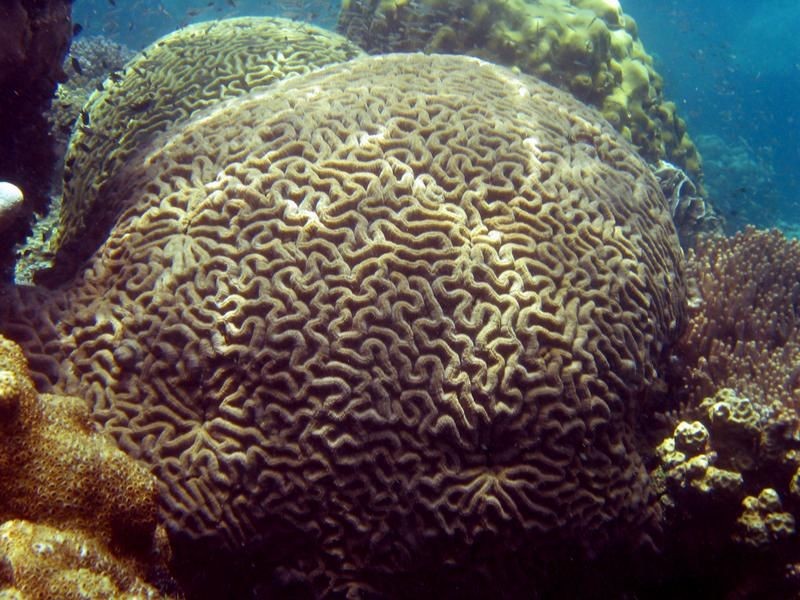Boulder brain coral
A species of Boulder brain coral, Also known as Colpophyllia Scientific name : Colpophyllia natans Genus : Boulder brain coral
Boulder brain coral, A species of Boulder brain coral
Also known as:
Colpophyllia
Botanical name: Colpophyllia natans
Genus: Boulder brain coral
Content
Description
 Photo By Chaloklum Diving , used under CC-BY-3.0 /Cropped and compressed from original
Photo By Chaloklum Diving , used under CC-BY-3.0 /Cropped and compressed from original Description
Individual colonies of Colpophyllia natans are large and usually broadly domed, with curvature typically increasing with the size, and therefore age, of the colony. They grow up to two metres in diameter and morphologically earn the epithet "boulder". Colony shape may occasionally be flat-topped discs, particularly when younger. As a type of brain coral, the surface of the skeleton is a network of winding, curving valleys and ridges (or walls) that roughly resemble the familiar folding architecture of the mammal cerebrum. The colour of the ridges and valleys vary among colonies, with the ridges being various shades of brown, and the valleys either whitish, green, or tan. The ridge tops are indented with a single thin groove. Ridges and valleys may be up to 2 centimetres wide, and this breadth distinguishes it from the narrower Diploria, which may otherwise be similar in appearance. The polyps only extend their tentacles at night. The robust shape, size, and slow growth of the boulder brain coral allows it more easily to survive conditions to which smaller and more fragile corals, such as the plate-like lettuce coral (Agaricia agaricites), succumb. C. natans and the sympatric and similarly named boulder star coral (Montastraea annularis) are less likely to be smothered by algal bloom, and have also weathered reef-wrecking Hurricane Allen off the coast of Jamaica in 1980. Corals in the Caribbean are susceptible to bleaching caused by high water temperatures and solar radiation. A nine-month study conducted in 2005 compared the mortality of C. natans from bleaching to that of Porites porites, which has a finger-like morphology. Although the severity of bleaching between the two species was similar, 56% of the P. porites colonies studied died from the bleaching, compared to only 8% mortality for bleach-affected C. natans. However, bleaching induced widespread incidence of the coral syndrome White Plague Type II, resulting in bleaching-related mortality of 42% among C. natans over 9 months, nearly as high as that for P. porites.
* Disclaimer: The judgment on toxicity and danger is for reference only. We DO NOT GUARANTEE any accuracy of such judgment. Therefore, you SHALL NOT rely on such judgment. It is IMPORTANT TO SEEK PROFESSIONAL ADVICE in advance when necessary.
Scientific Classification
Phylum
Cnidarians Class
Sea anemones and corals Order
Hard corals Family
Brain coral Genus
Boulder brain coral Species
Boulder brain coral